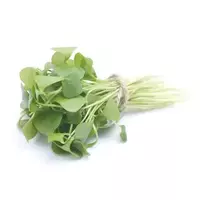Portulac

Garden pursuit or Portulaca oleracea is a plant that is isolated into the genus of the same name and subspecies. The purslane plant has been known to humans since ancient times. The Romans and Greeks also ate green fox purslane. In addition, ancient doctors and thinkers studied and described the useful properties of the pursuit. For example, Pliny and Hippocrates mentioned pursuits in works and treatises on the medical topic. Portulac was also known in the East. The plant was called "blessed, " because the healing properties of the pursuit helped in the prevention and treatment of a number of diseases. In Europe, the existence of the pursuit was learned only in the XVII century.
French chefs were the first to use pursuits for cooking. From France, the pursuit gradually spread throughout European territory. Portulac looks like a herbaceous plant, the stem of which lies on the ground. The leaves of the pursuits are small and have an elongated shape. The plant blooms with inflorescences of different colors. The chemical composition of green leaves of the plant determines the useful properties of the pursuit. The portulac contains a sufficient amount of such useful trace elements as manganese, zinc, iron, as well as magnesium, potassium and calcium.
The benefits of fresh purslane leaves are the content of carotene, ascorbic and nicotinic acid, as well as tocopherol and phylloquinone. There are three main species of the plant - golden yellow, green and broad-leaved pursuit. Fresh leaves and sprigs of pursuit are eaten. Typically, purslane is added to vegetable salads or mixes of fresh green salad leaves. Also, the leaves of the pursuit are added to soups or second courses.
Boiled purslane or vegetable honeycomb with purslane leaves can be a fine side dish for meat dishes. In dried form, pursuit is used as a spice, which is seasoned with soups, sausages and meat products. In addition, pickled pursuit leaves are especially popular, which are distinguished by excellent taste and often replace capers. Portulac found wide application not only in cooking, but also in medicine. Even ancient doctors believed that purslane is able to cleanse the body of harmful compounds and slags.
In modern times, this theory has received scientific support. Pursuit has distinctive diuretic properties and acts as a natural antioxidant. The plant is used in medicinal collections and infusions that help with insomnia, kidney and liver diseases, as well as with flatulence and colpitis. Pursuit contributes to the normalization of blood sugar levels, as well as affects blood pressure. In addition, the pursuit is considered an old antidote to the bites of some snakes dangerous to human life and health.
Portulaka 16 kCal
Energy value of purslane (Ratio of proteins, fats, carbohydrates - ju):
Proteins: 1.3 g (~ 5 kCal)
Fats: 0.1 g (~ 1 kCal)
Carbohydrates: 3.43 g (~ 14 kCal)
Energy ratio (b | y): 33% | 6% | 86%
 Español
Español Français
Français Português
Português Русский
Русский 简体中文
简体中文 繁體中文
繁體中文 日本語
日本語 한국어
한국어 العربية
العربية Türkçe
Türkçe Қазақ
Қазақ Deutsch
Deutsch Italiano
Italiano Українська
Українська
